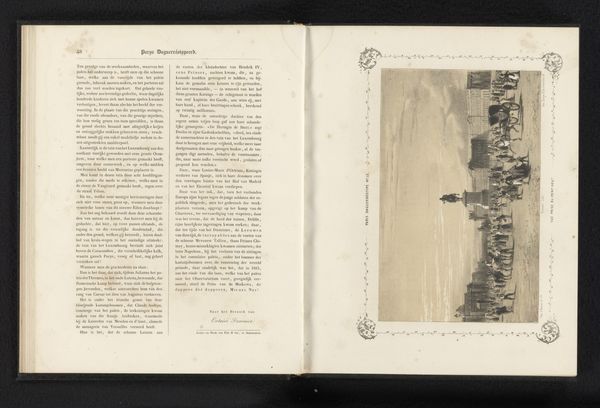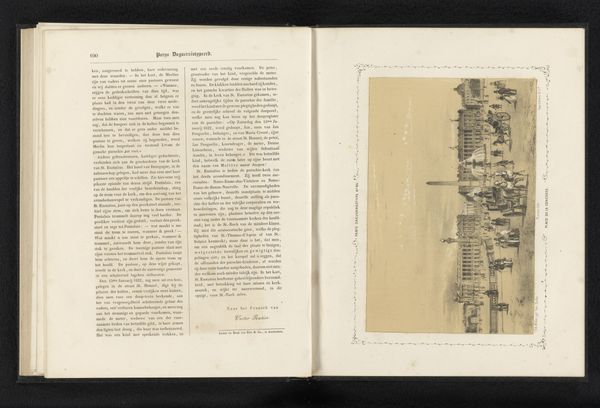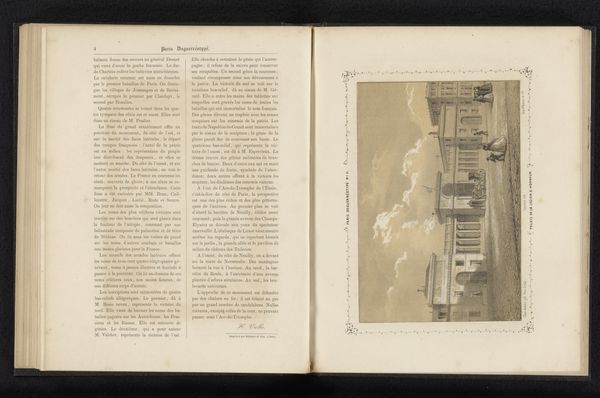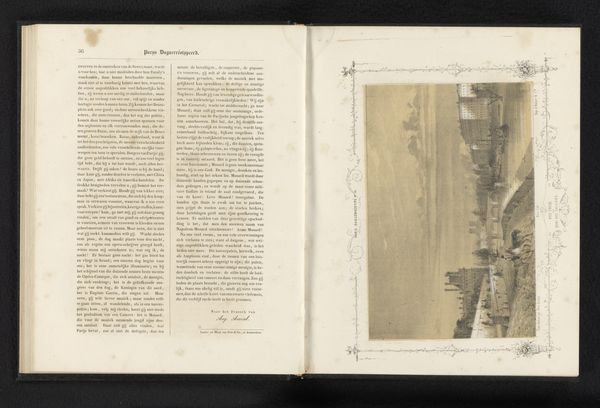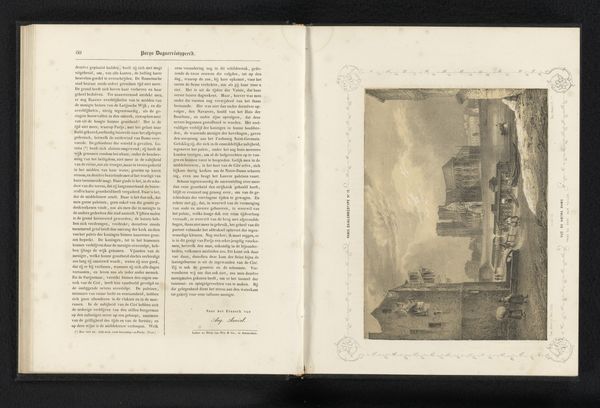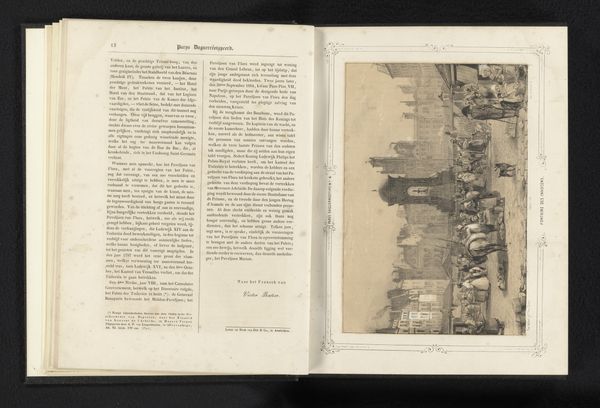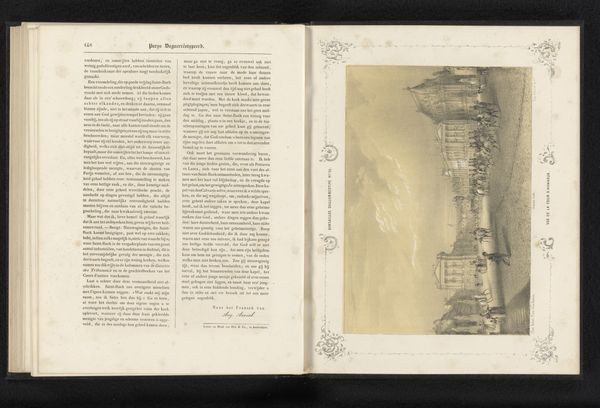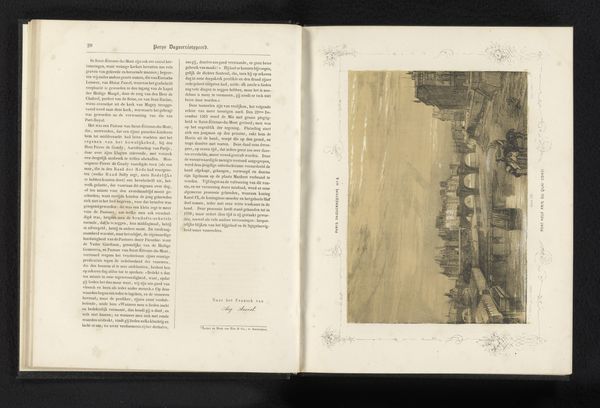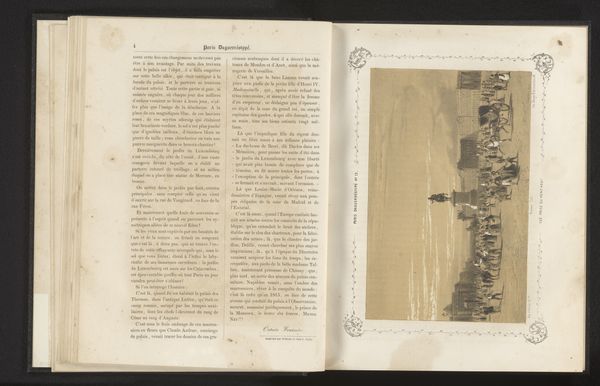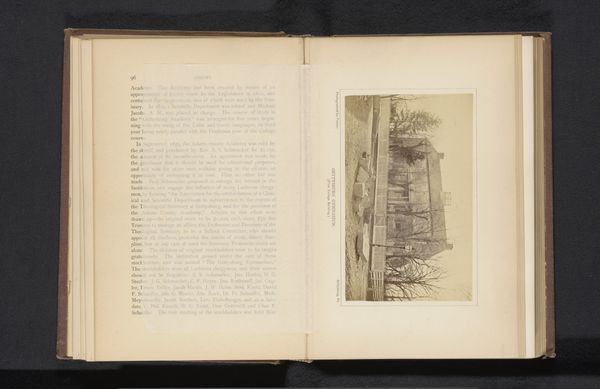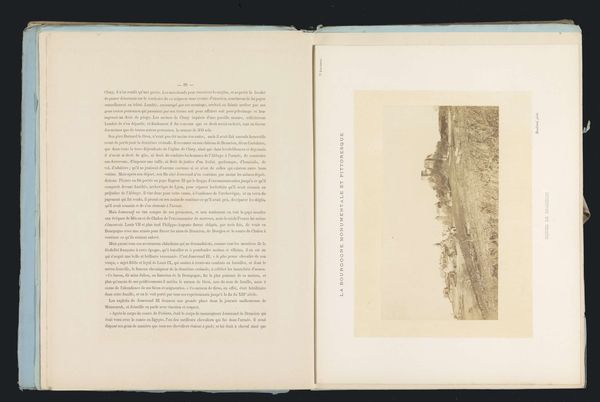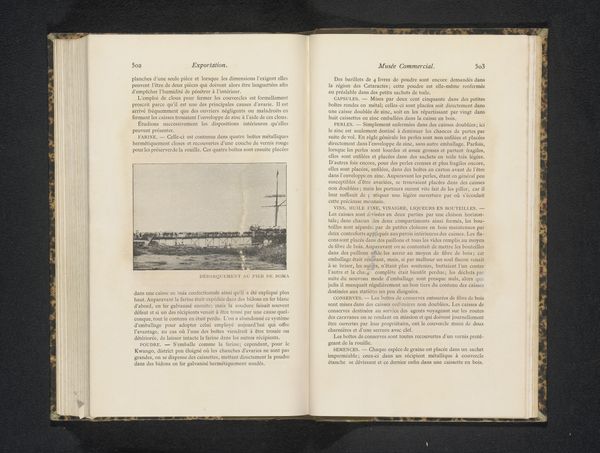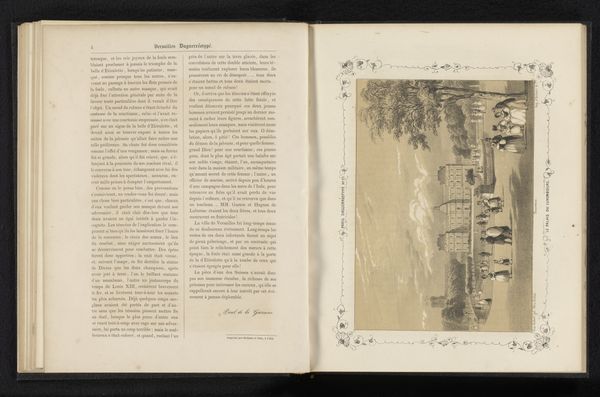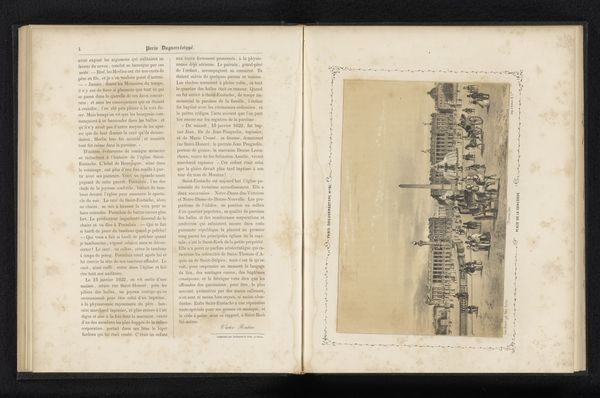
lithograph, print, paper, engraving
#
lithograph
# print
#
paper
#
romanticism
#
cityscape
#
engraving
Dimensions: height 210 mm, width 260 mm
Copyright: Rijks Museum: Open Domain
Editor: This is Jean Louis Tirpenne's "Château-d'Eau in Parijs," created before 1840. It’s a lithograph and engraving on paper. What strikes me is the wintry scene—you can almost feel the chill. What's your take on this work? Curator: Considering Tirpenne's lithograph and engraving, I'm interested in the materiality of printmaking itself. How did the reproductive process affect the distribution and consumption of images of Paris? Editor: That's an interesting angle, I hadn't thought about that. Curator: Before photography, these prints served as a primary means for people to visualize places they might never visit. It democratized access to Parisian cityscapes. Note the specific texture achieved by the lithographic stone and engraving tools. This dictated the final visual experience. How might that production, using those specific materials, impact what was communicated and perceived about Paris? Editor: So you're saying the choice of lithography and engraving, instead of say, painting, makes a statement about accessibility and mass consumption? Curator: Precisely! Furthermore, consider the labor involved in producing multiple editions of this print. It wasn’t a unique object created by a single artist but a product of collaboration and mechanical reproduction. How does that shift our understanding of artistic value? Editor: So the artistic value is tied less to individual genius and more to the work and democratization of distribution. Curator: Exactly. Editor: This reframes how I see the work, moving away from a romantic depiction towards a study of production and social context. Thanks! Curator: And understanding the materiality and process allows us to appreciate how images shaped perceptions and participation in urban life.
Comments
No comments
Be the first to comment and join the conversation on the ultimate creative platform.
